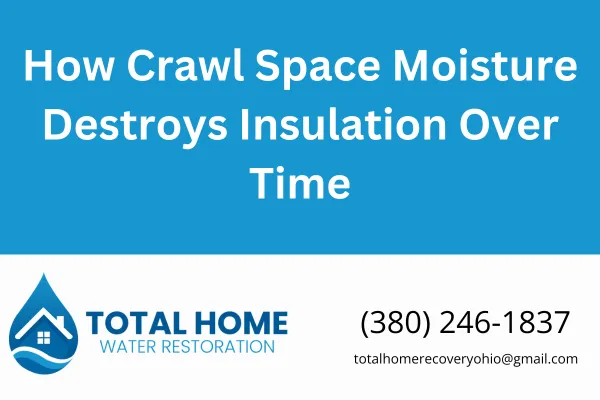
How Crawl Space Moisture Destroys Insulation Over Time
How Crawl Space Moisture Destroys Insulation Over Time
Crawl space moisture might not seem like a big deal—until it starts eating away at your insulation. We see it all the time around Grove City and Columbus: damp, sagging insulation that's no longer doing its job. If you're dealing with cold floors, rising energy bills, or musty smells, this might be why.
Here’s what every homeowner needs to know.
What Moisture Does to Crawl Space Insulation
When moisture sneaks into your crawl space, insulation is one of the first things to suffer. Here’s how:
Soaking and Settling: Fiberglass insulation absorbs water like a sponge. Wet insulation gets heavy and starts to sag or fall out of place.
Compressed R-Value: Wet insulation loses its air pockets—the part that makes it effective. That means it no longer insulates properly.
Mold and Mildew Growth: Once insulation gets damp, it’s a breeding ground for mold. That affects indoor air quality and smells musty.
Wood Rot Risk: If the insulation traps moisture against the subfloor or joists, it can cause long-term damage to your home’s structure.
Signs Your Crawl Space Insulation Is in Trouble
Watch for these red flags:
Insulation is hanging down or looks compressed
Floors above the crawl space are cold in winter
Higher-than-normal heating and cooling bills
Musty or damp odors coming from vents or crawl space
You see water or mold in the crawl space
What Causes the Moisture?
We often trace insulation damage to one or more of these issues:
Poor Ventilation: Without air flow, moisture builds up from the ground or air leaks above.
Lack of Vapor Barrier: Bare dirt floors let ground moisture seep up into your crawl space.
Foundation Cracks or Leaks: Even small openings let in water during rain or snow melt.
Old Insulation Materials: Some older insulation types (like paper-faced fiberglass) hold moisture instead of resisting it.
How We Fix It Right
At Total Home Water Restoration, here’s how we protect your crawl space and your insulation:
Inspect and Identify the Source – We check for leaks, ground moisture, HVAC duct sweating, and air leaks.
Remove Damaged Insulation – Wet or moldy insulation gets safely removed.
Dry the Space – We use industrial-grade drying equipment to eliminate moisture.
Install New, Mold-Resistant Insulation – We use materials rated for high-humidity spaces, like closed-cell spray foam or properly secured fiberglass.
Seal and Protect – We add vapor barriers, seal vents, and recommend encapsulation if needed to prevent future problems.
Do I Need to Replace All the Insulation?
Not always—but we’ll give you an honest answer. If just a small area is affected, we might only need to patch and improve drainage. If the whole crawl space is wet or moldy, it's smarter (and safer) to replace it all and fix the moisture problem at the same time.
Final Thought
If you’ve got crawl space moisture, don’t wait. The longer it goes, the more damage it does—not just to your insulation, but to your home’s comfort, air quality, and value.
Need a crawl space inspection in Grove City or nearby? We’re local, licensed, and straight shooters. Give us a call—we’ll fix it like it’s our own home.
Call Total Home Water Restoration
📍 4141 Hoover Rd, Grove City, OH 43123
📞 380-246-1837
